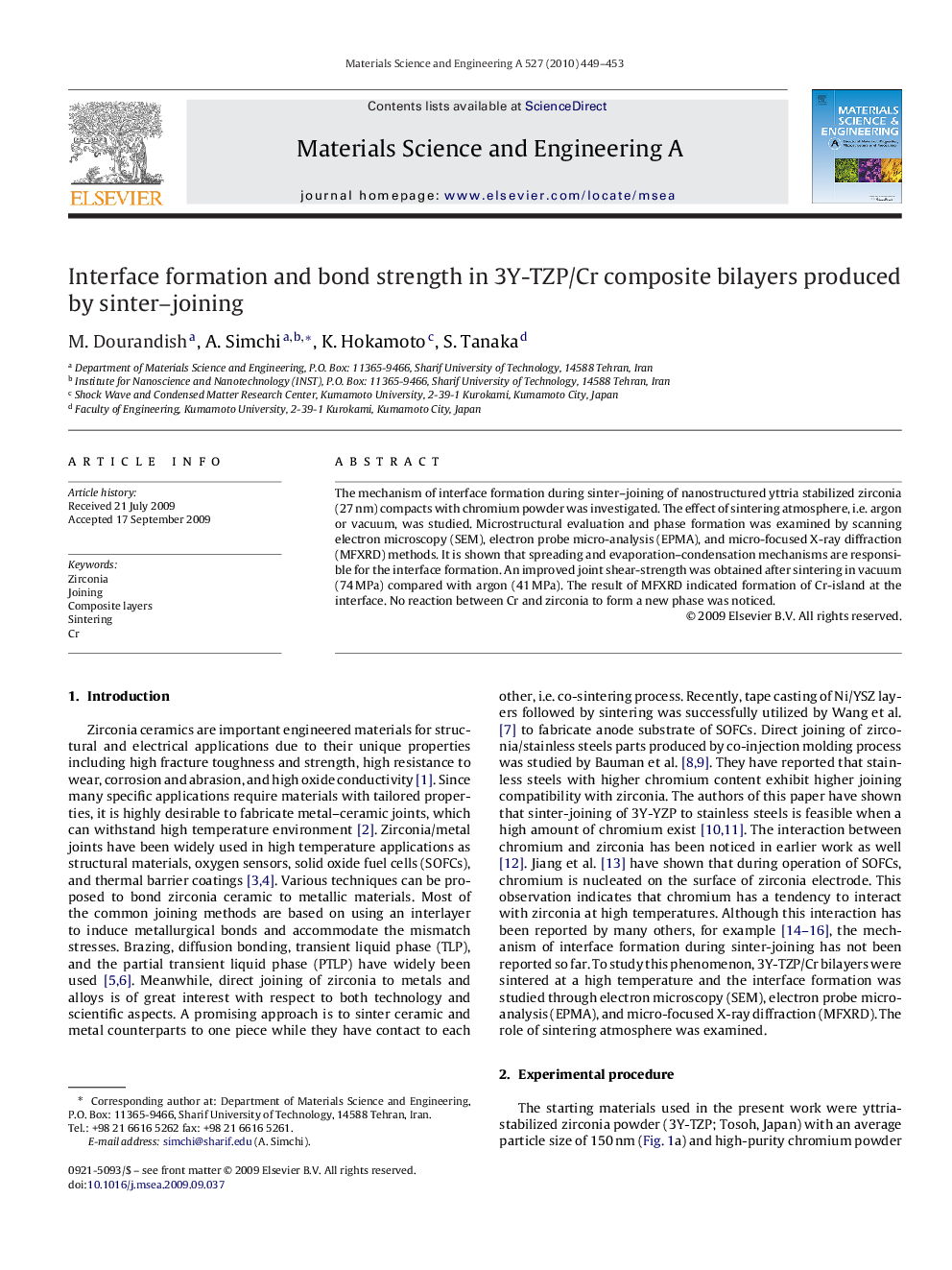| Article ID | Journal | Published Year | Pages | File Type |
|---|---|---|---|---|
| 1579910 | Materials Science and Engineering: A | 2010 | 5 Pages |
Abstract
The mechanism of interface formation during sinter-joining of nanostructured yttria stabilized zirconia (27Â nm) compacts with chromium powder was investigated. The effect of sintering atmosphere, i.e. argon or vacuum, was studied. Microstructural evaluation and phase formation was examined by scanning electron microscopy (SEM), electron probe micro-analysis (EPMA), and micro-focused X-ray diffraction (MFXRD) methods. It is shown that spreading and evaporation-condensation mechanisms are responsible for the interface formation. An improved joint shear-strength was obtained after sintering in vacuum (74Â MPa) compared with argon (41Â MPa). The result of MFXRD indicated formation of Cr-island at the interface. No reaction between Cr and zirconia to form a new phase was noticed.
Related Topics
Physical Sciences and Engineering
Materials Science
Materials Science (General)
Authors
M. Dourandish, A. Simchi, K. Hokamoto, S. Tanaka,
